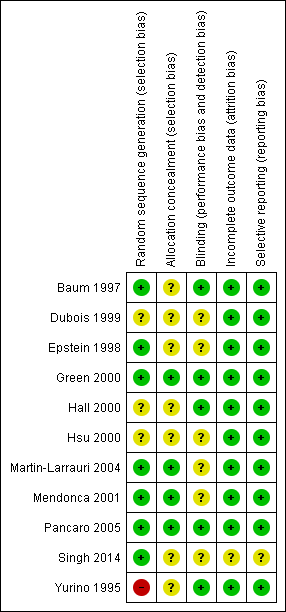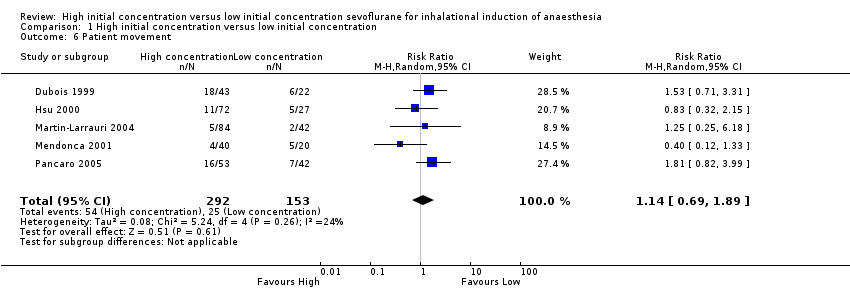Contenido relacionado
Revisiones y protocolos relacionados
Ana C Ortiz, Álvaro N Atallah, Delcio Matos, Edina MK da Silva | 7 febrero 2014
David Miller, Sharon R Lewis, Michael W Pritchard, Oliver J Schofield‐Robinson, Cliff L Shelton, Phil Alderson, Andrew F Smith | 21 agosto 2018
David Costi, Allan M Cyna, Samira Ahmed, Kate Stephens, Penny Strickland, James Ellwood, Jessica N Larsson, Cheryl Chooi, Laura L Burgoyne, Philippa Middleton | 12 septiembre 2014
Suzanne Forsyth Herling, Bjørn Dreijer, Gitte Wrist Lam, Thordis Thomsen, Ann Merete Møller | 4 abril 2017
Anjolie Chhabra, Rajeshwari Subramaniam, Anurag Srivastava, Hemanshu Prabhakar, Mani Kalaivani, Saloni Paranjape | 14 marzo 2016
Pramote Euasobhon, Sukanya Dej‐arkom, Arunotai Siriussawakul, Saipin Muangman, Wimonrat Sriraj, Porjai Pattanittum, Pisake Lumbiganon | 18 febrero 2016
Joanne Guay, Karl Sales | 27 agosto 2015
Jørn Wetterslev, Christian S Meyhoff, Lars N Jørgensen, Christian Gluud, Jane Lindschou, Lars S Rasmussen | 25 junio 2015
Sharon R Lewis, Amanda Nicholson, Andrew F Smith, Phil Alderson | 11 julio 2014
Rao Sun, Wen Qin Jia, Peng Zhang, KeHu Yang, Jin Hui Tian, Bin Ma, Yali Liu, Run H Jia, Xiao F Luo, Akira Kuriyama | 6 noviembre 2015












